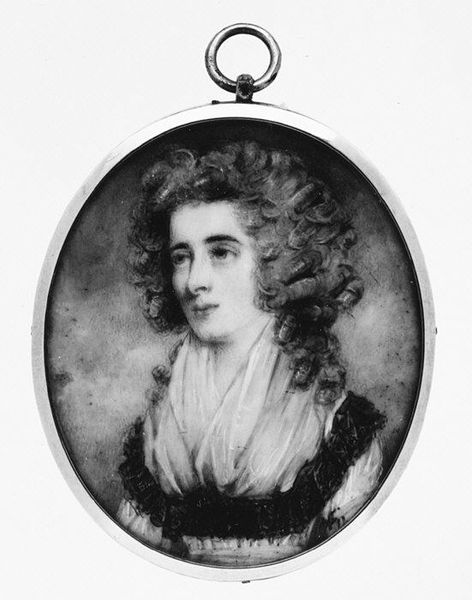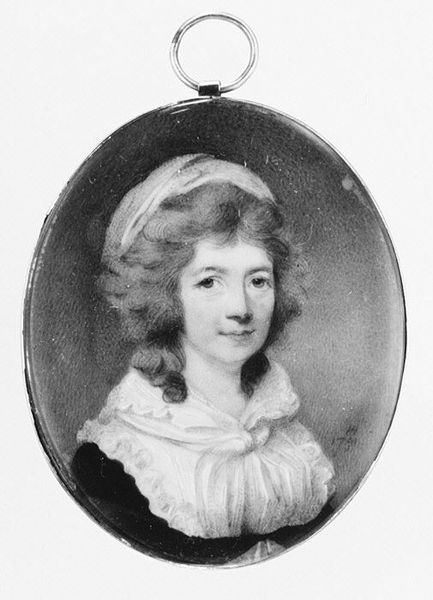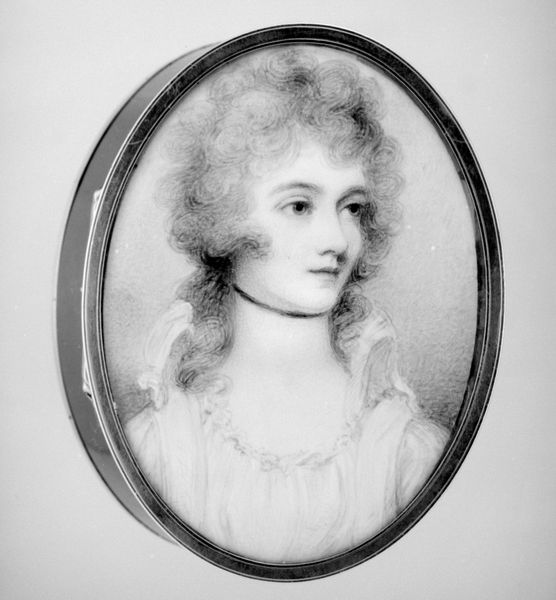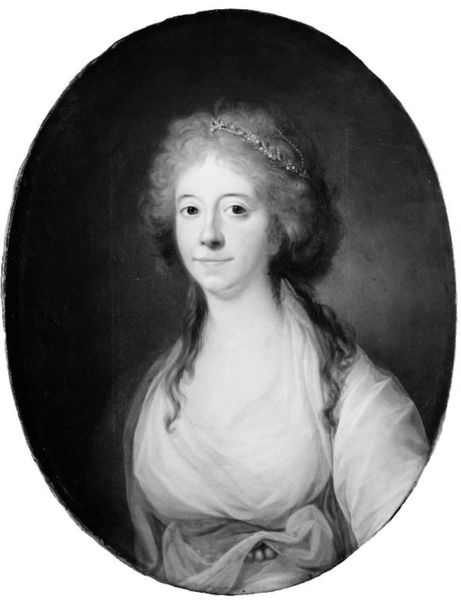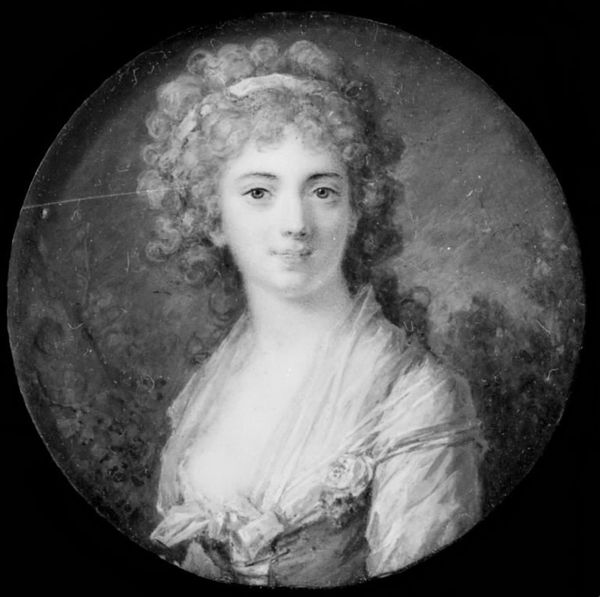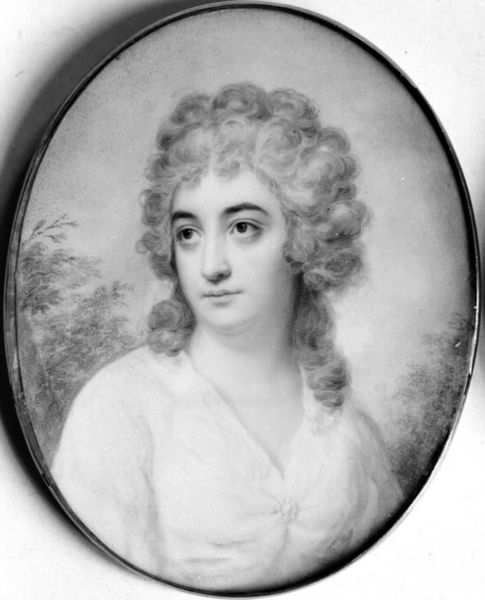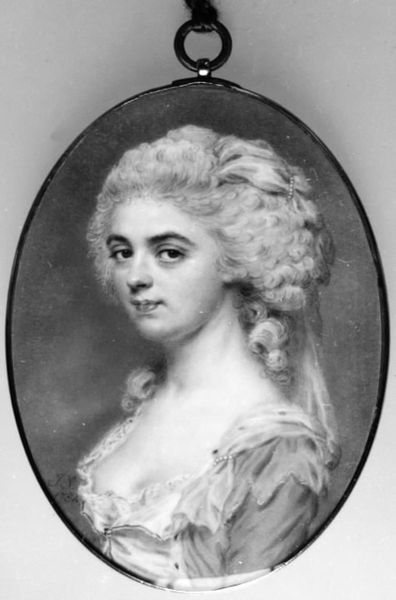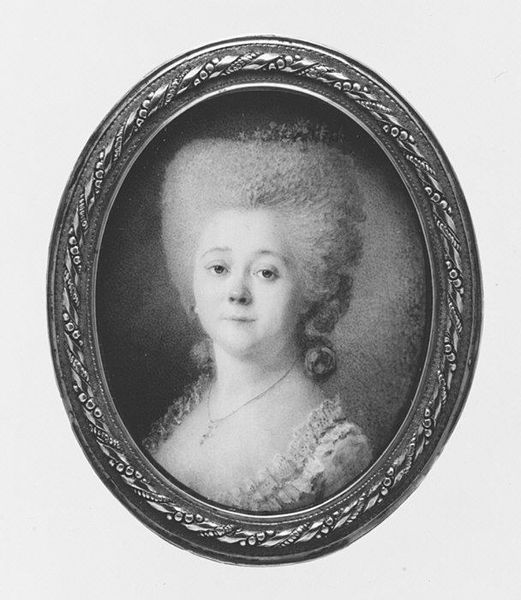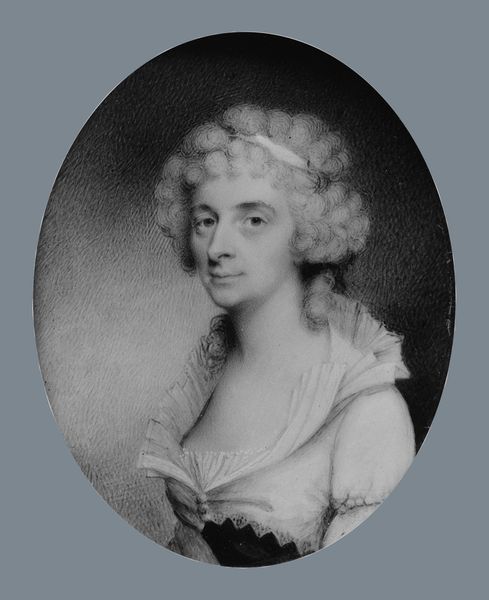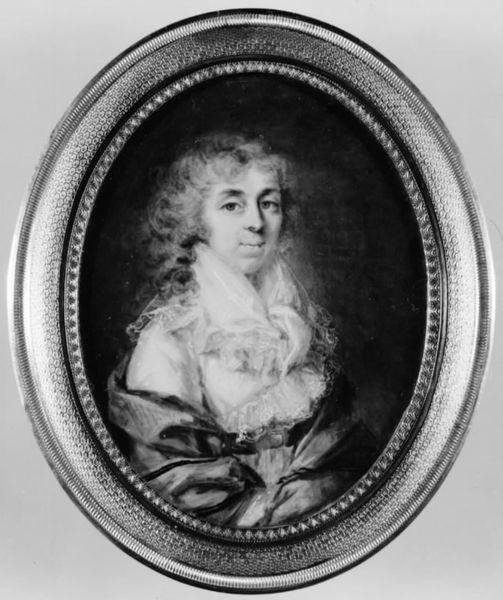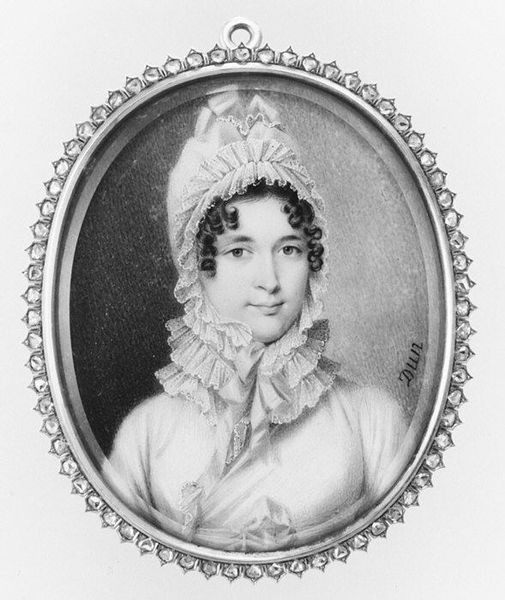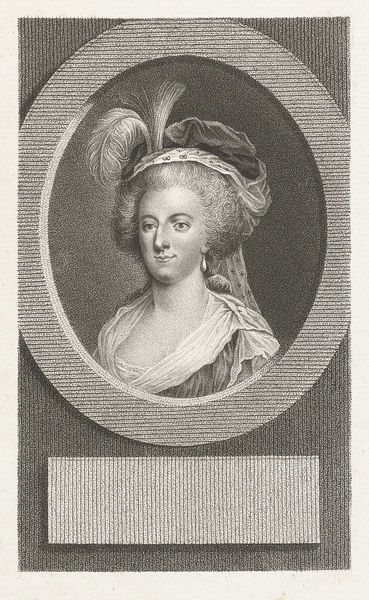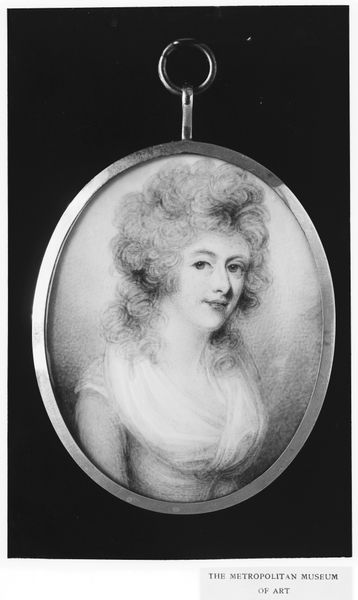
drawing, pencil
#
portrait
#
drawing
#
neoclacissism
#
pencil
#
miniature
Dimensions: Oval, 2 1/4 x 1 7/8 in. (58 x 48 mm)
Copyright: Public Domain
Curator: This exquisitely rendered miniature is known as "Portrait of a Woman," attributed to Richard Crosse, dating roughly from 1775 to 1785. It's currently held here at The Metropolitan Museum of Art. Editor: It's strikingly simple. The grayscale palette lends it a sense of timelessness. There is such careful distribution of value in this work; one can easily identify that it is representing the likeness of a well-to-do lady. Curator: Indeed, the tonal range achieved with just pencil on paper speaks volumes about Crosse's mastery of line and shading. Note the subtle variations, crucial to conveying the sitter’s form within the oval frame. Editor: The miniature size also seems significant; these portraits were often incredibly intimate objects—carried and kept in lockets, given as gifts or keepsakes to solidify dynastic marriage. How does this speak to 18th-century portraiture overall? Curator: Precisely! In that era, this would have been used among only a select group of people: the sitter, the patron, and their family circle, to perpetuate a political, commercial or familiar identity. Editor: So much importance was then put into depicting the proper and desirable look and persona of that upper class of the period. Curator: The clothing of the figure depicted also gives indications of that, correct? Also notice, the artist doesn’t rely on surface sheen for meaning. Rather the image, even small, provides visual depth of that Neoclassical Period. Editor: Crosse captured a profound psychological depth despite the limited scale. His precise crosshatching describes how light strikes, creating the delicate sense of skin, hair, and fabric; it conveys status but doesn't feel gaudy in its aesthetic. What is most evident is the restraint in style. Curator: Seeing the ways this microcosm encapsulates broader themes makes it all the more resonant, no? Editor: It most certainly does. It causes the viewer to connect with the era portrayed and understand, for at least an instance, the reality of what being present there meant for that woman in that circle.
Comments
No comments
Be the first to comment and join the conversation on the ultimate creative platform.
